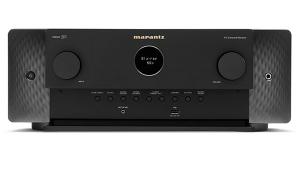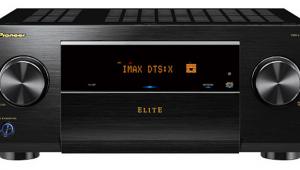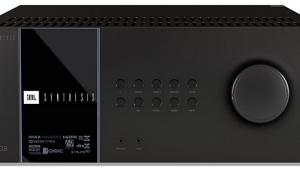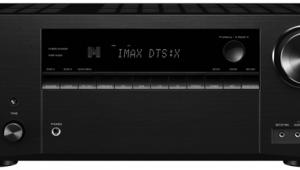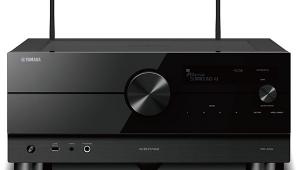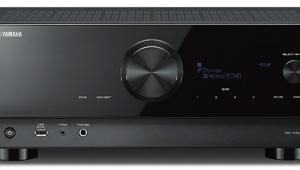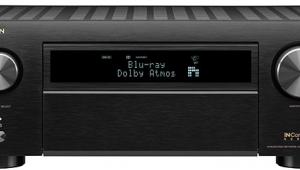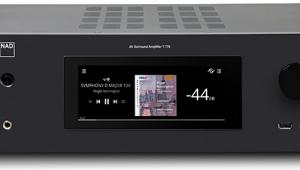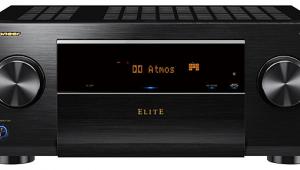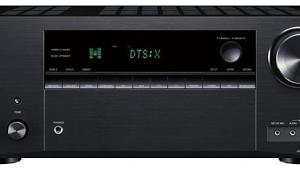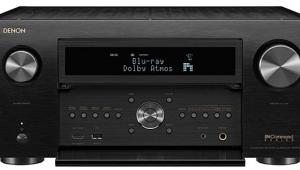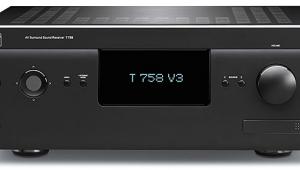Denon AVR-X5200W Atmos-Enabled AV Receiver Page 2
On to multichannel music. There aren’t many better-sounding smooth-pop SACD productions than Norah Jones’ maiden effort, Come Away with Me. The Denon made short work of this at any volume up to (and beyond) control-room-playback levels, maintaining lifelike, airy transients and sweet, DSD-at-its-best ride cymbals and brushwork. Jones’ vocals remained pristine throughout, and her characteristic double-octaves piano punctuations had real dynamic conviction.
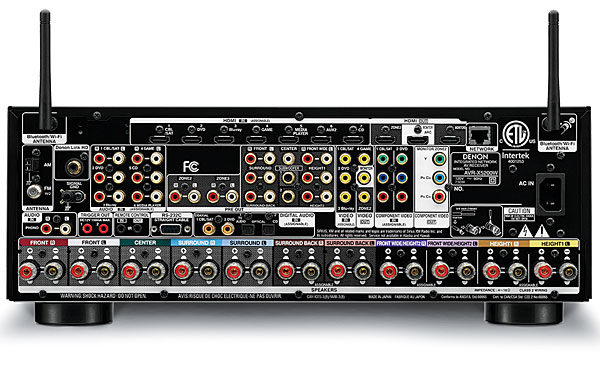
With these bona fides established, I had little fear for the AVR-X5200W’s movie-sound performance. Cloud Atlas is a perfect exemplar of why it’s better to take your sci-fi folderol with a wink and a nudge (T2, The Fifth Element) than with literary pretensions (I haven’t read the book). Still, it’s hard to argue with the movie’s production, makeup, and sound design. As an audio demonstrator, it neatly wraps up nearly every sort of sonic element and style into a single DTS-HD Master Audio–encoded Blu-ray package, one that the Denon delivered with gusto. Plenty of power was evident for big-action material like the futuristic-city chase-and-fight sequence, while all the dialogue nuance of the many quiet one-on-one scenes was well served.
 Of course, the AVR-X5200W’s marquee mode is Dolby Atmos, so I fired up the only Atmos-pheric content available to me at the time: Dolby’s own Blu-ray demo of the format, a collection of trailers and shorts. (I will confess to being favorably impressed by Atmos; see "Atmos, Here: Sound & Vision's First Foray Into Object-Based Sound".) The Denon handily played all of these selections, some of which are quite demanding, at a fully theater-like reference level, without any suggestion of having broken a sweat. My pressed-into-service Def Tech Elevation Modules also received surround-processed content in the Denon’s various Dolby Surround modes from both two-channel and non-Atmos surround-encoded programs, but I couldn’t determine if these contributions incorporated any actual height cues or steering; I suspect not. That said, they did make stuff like NFL games sound bigger, taller, and more immersive. Atmos-ready? Based on these early returns, I’d say yes, yes I am.
Of course, the AVR-X5200W’s marquee mode is Dolby Atmos, so I fired up the only Atmos-pheric content available to me at the time: Dolby’s own Blu-ray demo of the format, a collection of trailers and shorts. (I will confess to being favorably impressed by Atmos; see "Atmos, Here: Sound & Vision's First Foray Into Object-Based Sound".) The Denon handily played all of these selections, some of which are quite demanding, at a fully theater-like reference level, without any suggestion of having broken a sweat. My pressed-into-service Def Tech Elevation Modules also received surround-processed content in the Denon’s various Dolby Surround modes from both two-channel and non-Atmos surround-encoded programs, but I couldn’t determine if these contributions incorporated any actual height cues or steering; I suspect not. That said, they did make stuff like NFL games sound bigger, taller, and more immersive. Atmos-ready? Based on these early returns, I’d say yes, yes I am.
Ergonomics
These days, any AVR above the entry-est of levels lives or dies by its onscreen prowess, and the Denon’s is first-rate. Menus appear and disappear quickly, and the design is infallibly clear and readable. There’s a very handy Option menu that pops up via a single press of a remote key, and it gives a short list of, well, options; different ones depending on source or listening mode (radio options for radio modes, streaming options for streaming modes, etc.), but they always include Picture Mode and Channel Adjust. The latter jumps to a submenu with a level-offset slider for every active channel, a feature that’s near and dear to my heart in everyday use. (Thanks yet again, Denon. That said, this is similar to an identically named feature on Onkyo/Integra designs. No, I don’t know who stole it from whom.)
With a full complement of wireless and video features, the AVR-X5200W should keep tweakers happy. Bluetooth and AirPlay are both on board; they worked fine from my iPhone. (The Denon doesn’t incorporate aptX, at least as far as I could determine.) Video options include the usual Custom, Movie, and Vivid modes, plus the ISF/Day and Night presets, but user-accessible controls for brightness, black level, and so on are available only on Custom—sensible enough, in my view.
Like most every networkable AV receiver today, the AVR-X5200W can be controlled by an iOS/Android app. Denon’s is a bit less immediately intuitive than others I’ve used but generally usable enough. (You can also control the receiver over IP from any Web browser.) In addition to the already mentioned vTuner Internet radio, the AVR-X5200W offers Pandora and streaming-Sirius/XM, and it can serve as a streaming-playback destination for Spotify apps (there’s no Spotify software resident on board).
The Denon enables you to choose surround modes by pressing dedicated Movie, Music, Game, or Pure keys, each of which cycles through the relevant modes. This scheme is similar to that of many competing AVRs, but I found myself wishing the AVR-X5200W had a single, selectable menu that listed all the available surround modes in one place. The Denon presents no Dolby PLIIx/Movie/Music options, just a single “Dolby Surround” option under each—this is Dolby’s new Atmos-era designation for its logic-based surround processing. Activating this option superimposes surround processing (presumably PLIIz-ish) onto two-channel (or bitstream) signals, but with none of the PLII adjustable parameters on tap. DTS Neo:X is present in each flavor, also without adjustment options.

Audyssey’s DSX extended-surround processing is also available if non-Atmos height or width speakers are present in the setup. Since the AVR-X5200W has an extra pair of speaker jacks beyond an Atmos 5.1.4 setup, it’s possible to have both, but the Atmos speakers can’t be reassigned for DSX without physically moving their connections and locations in the room.
All in all, Denon has done a reasonably good job of making all this power and flexibility accessible. Proving once again that the simplest solution is always the best, Denon’s Quick Select feature lets you easily establish four macros combining source, volume, surround, Audyssey, and picture/scaler settings, together with (my favorite) relative channel-level tweaks, all with one-touch recall from four dedicated remote keys—potentially, a very handy feature.
The supplied remote, if fairly dense, is quite usable—though I do wish the consumer electronics world would pow-wow to standardize up/down key placement. (Volume on the left and channel/station to the right, or vice versa; I don’t care, just be consistent!) The handset can exploit the usual preset library for control of most other-brand gear, but there’s no learning routine for obscure or antique components. Nor is there any remote illumination, a feature I would have expected at this price level.
The Bottom Line
That minor quibble aside, I have little but praise for Denon’s AVR-X5200W. It sounded first-rate in every mode, and I should think it would prove amply powerful for even quite generously sized home theaters. Dolby Atmos may be a real draw, but there are enough other virtues on board the new Denon to attract non-Atmos (or at least pre-Atmos) shoppers as well.
MORE FROM S&V's DOLBY ATMOS SPECIAL
Atmos, Here: Sound & Vision's First Foray Into Object-Based Sound
Interview: Greg P. Russell, sound rerecording mixer of Transformers: Age of Extinction
